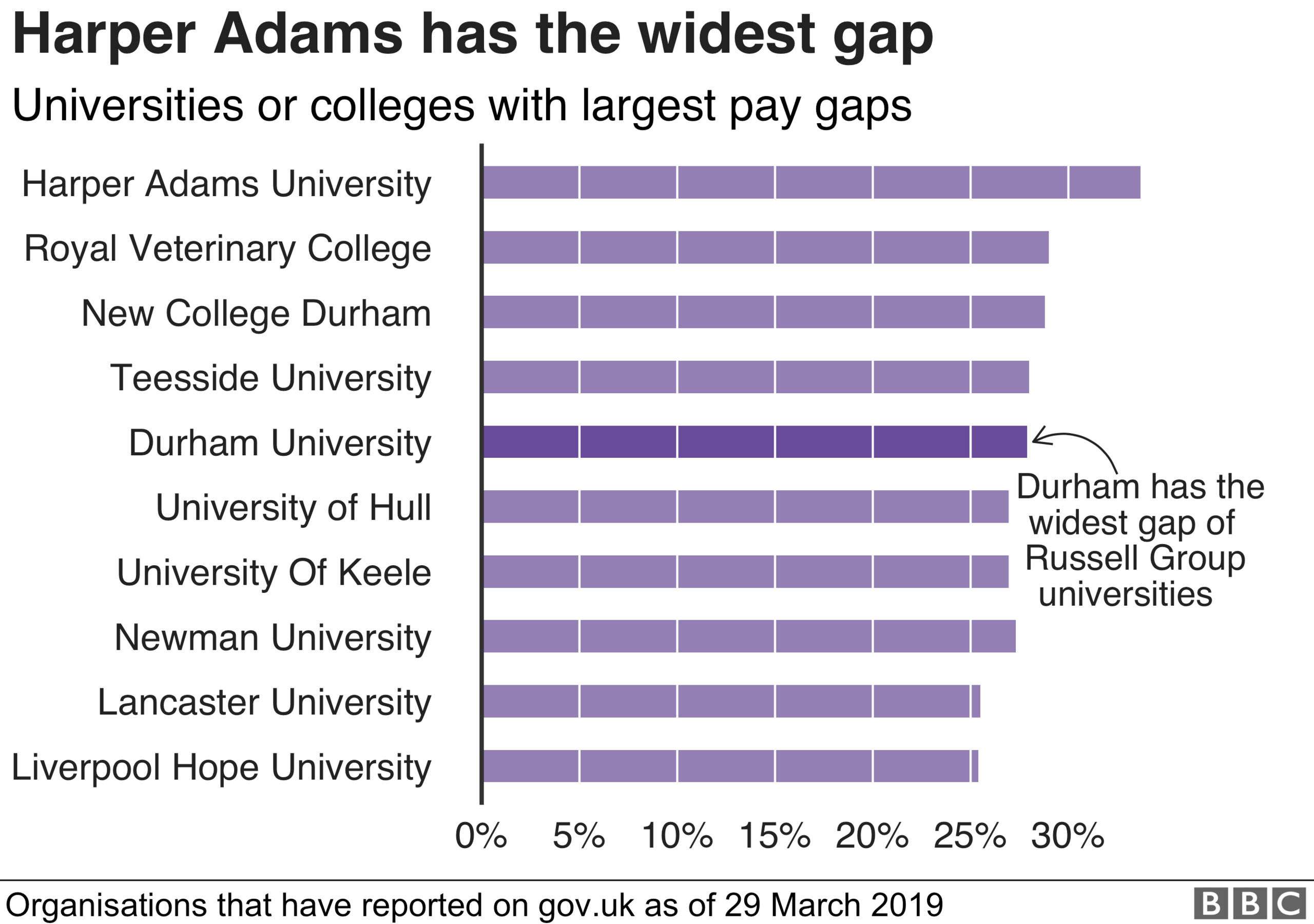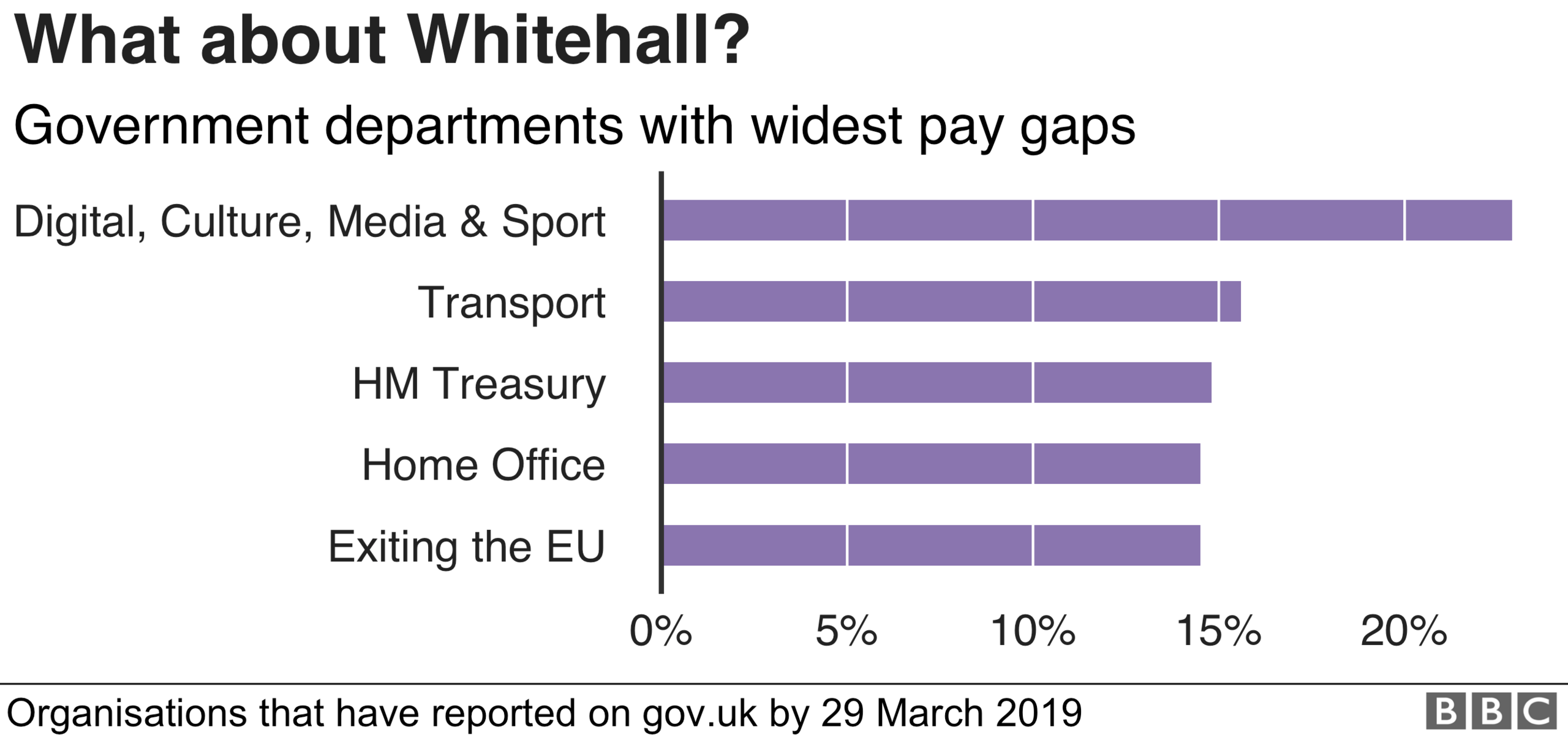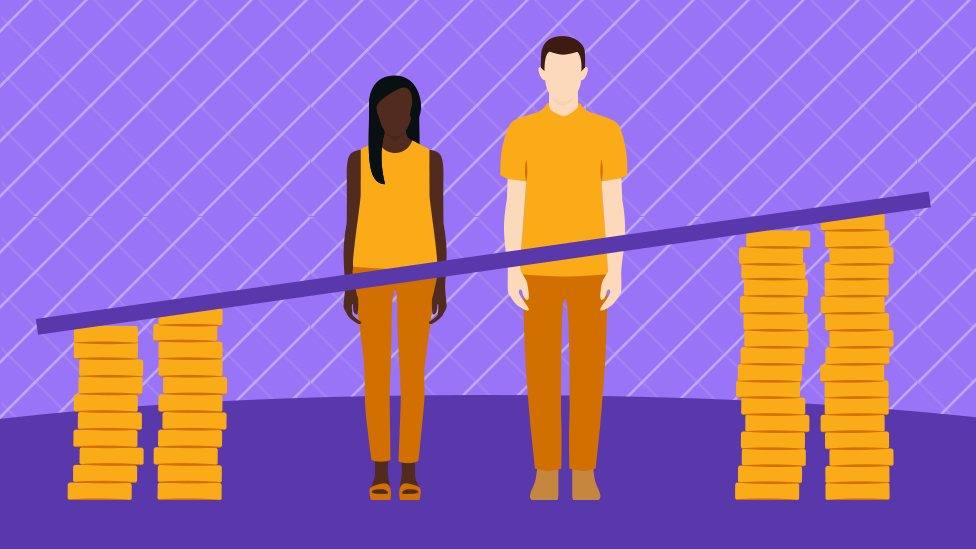Big university gender pay gap revealed
- Published

More than nine out of 10 British universities pay their average male employee more than they pay their average female employee.
Nearly all government departments and almost two-thirds of local councils also have pay gaps, based on data given to the Government Equalities Office.
Saturday is the last day for public sector bodies with more than 250 staff in Britain to disclose their figures.
Private sector companies have one more week, until 4 April.
But with the deadline looming, thousands have yet to file, as many wait until the last moment. Last year, half of all companies reported in the final week.
This is the second year that both public and private sector companies have been required to report their gender pay gap figures.
Want to find out the gender pay gap where you work? Try the calculator below.
If you cannot see the calculator, please click here, external
The public sector employs 5.3 million people, representing about one-sixth of the UK workforce.

British universities report a higher median pay gap, 13.7% on average, than the national average of 9.1% in 2018.
The university gender pay gap in 2017 was 15.3%.
The Universities & Colleges Employers Association (UCEA) said there had been a "marked narrowing of the gap over the past decade".
It said it had worked with member organisations "over many years" on the issue.
"All HE [Higher Education] institutions have been supportive of this and have focused their own work to develop a better understanding of practice and trends... and to explore effective interventions and actions to try to close the gender pay gap," it added.
Harper Adams University has the widest gap, reporting a 33.7% difference.
A spokeswoman for Harper Adams said that the university's pay gap had narrowed in the past year and that it had taken external advice to try to address the issue.

Many universities also report a high bonus gender gap - the difference between what men and women are paid in bonuses. The University of Liverpool has a 87.6% bonus gap and Newcastle University 80%.
All government departments except the Department for Work and Pensions report a median pay gap.
The widest can be found in the Department for Digital, Culture, Media and Sport (DCMS), where the difference is 22.9%.
The DCMS said it was committed to reducing its gender pay gap and taking action accordingly.
"The overall civil service gender pay gap continues to narrow and we will continue to work hard to balance out wages at all levels of government," it added.

One in three government departments report that their pay gap has actually widened compared with last year.
The average median pay gap in local government is 3.7%. Tonbridge and Malling council reports the largest pay gap in favour of men, 32.7%, followed by Babergh at 27.8% and Dartford at 27.5%.
Meanwhile, 78 councils have reported that they pay women more than men. Three Rivers council in Hertfordshire has a 50% pay gap - in favour of women.
The gender pay gap does not mean that women are being paid less than men for the same work, something which has been illegal since 1970.
However, the pay gap does reflect differences in men and women's working patterns, with part-time roles being predominantly female - and a lack of women in senior roles.

Understanding the terminology
Median pay gap
The median pay gap is the difference in pay between the middle-ranking woman and the middle-ranking man.
If you line up all the men and women working at a company in two separate lines in order of salary, the median pay gap will be the difference in salary between the woman in the middle of her line and the man in the middle of his.
Mean pay gap
The mean pay gap is the difference between a company's total wage spend per woman and its total spend per man.
The number is calculated by taking the total wage bill for each and dividing it by the number of men and women employed by the organisation.
Pay gap v equal pay
The gender pay gap is not the same as unequal pay.
Unequal pay is giving women less than men for the same work. That has been against the law since the Equal Pay Act was introduced in 1970.
A company's gender pay gap can also be caused by other things - for example, fewer women in senior or highly-paid roles or more women in part-time jobs.
This article is based on the difference in what men and women are paid per hour, but there are other ways of calculating the gender pay gap: the Office for National Statistics releases annual figures here, external.

How does the BBC calculator work?
The individual company data reflects the information submitted by companies to the Government Equalities Office as of 29 March.
The data submitted each year is based on figures drawn from a specific date - called the "snapshot date" - the previous year. For businesses and charities, 5 April is the snapshot date, while 31 March is the snapshot date for public sector organisations.
All gender pay gap figures in this article reflect the hourly median pay gap for all employees.
Calculator design and development: Irene de la Torre Arenas, Becky Rush, Scott Jarvis, Alexander Ivanov and Oliver Schnuck.
- Published28 March 2019




